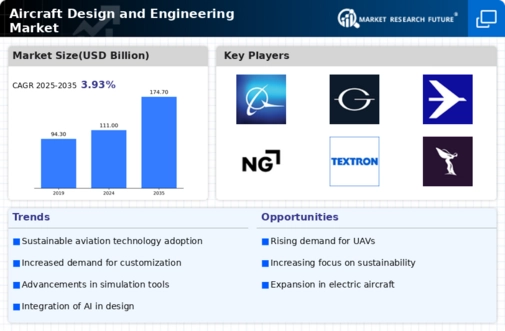The Aircraft Design and Engineering Market is a multifaceted arena where innovation and competition dictate the dynamics of growth and development. As a significant segment of the aerospace industry, this market features a diverse range of key players engaging in aircraft design, engineering solutions, and associated services.
The competitive landscape is characterized by the continuous pursuit of technological advancements, cost efficiency, and heightened regulatory compliance. Players in this market strive to leverage their capabilities, skills, and resources to address the evolving demands for fuel efficiency, performance optimization, and adherence to stringent safety standards.
The interplay between established companies and emerging entities fosters an environment ripe for collaboration, mergers, and acquisitions, ultimately shaping market trajectories and defining future trends in aircraft design and engineering.
Boeing stands as a cornerstone in the Aircraft Design and Engineering Market, recognized for its extensive experience and comprehensive portfolio in commercial and defense aerospace. With a robust research and development framework, Boeing capitalizes cutting-edge technology and innovative engineering practices to enhance aircraft performance and design.
The company's strong market presence is further reinforced by its significant investment in sustainability initiatives and lightweight materials, which align with the industry's shift towards environmentally friendly solutions.
Boeing's commitment to excellence is evident in its focus on customer-centric designs, which not only meet regulatory requirements but also elevate the overall flying experience. The combination of engineering expertise, a rich legacy, and strategic partnerships positions Boeing as a formidable contender capable of leading future advancements in aircraft engineering.
General Dynamics is also a key player in the Aircraft Design and Engineering Market, particularly recognized for its ability to integrate advanced technology with practical engineering solutions. The company's diverse range of offerings includes general aviation and military aircraft design, where they apply their engineering know-how to create cutting-edge aircraft systems that enhance operational capabilities.
General Dynamics excels in delivering highly customized solutions tailored to specific military and civilian requirements, ensuring performance and reliability under varying operational conditions. Their focus on innovation is complemented by a strong commitment to safety, making them a reputable choice among clients in both the defense and commercial sectors.
The strategic emphasis on research and development, coupled with a comprehensive understanding of the market needs, solidifies General Dynamics' role as a competitive force in aircraft design and engineering, poised to adapt to the changing demands of industry.












